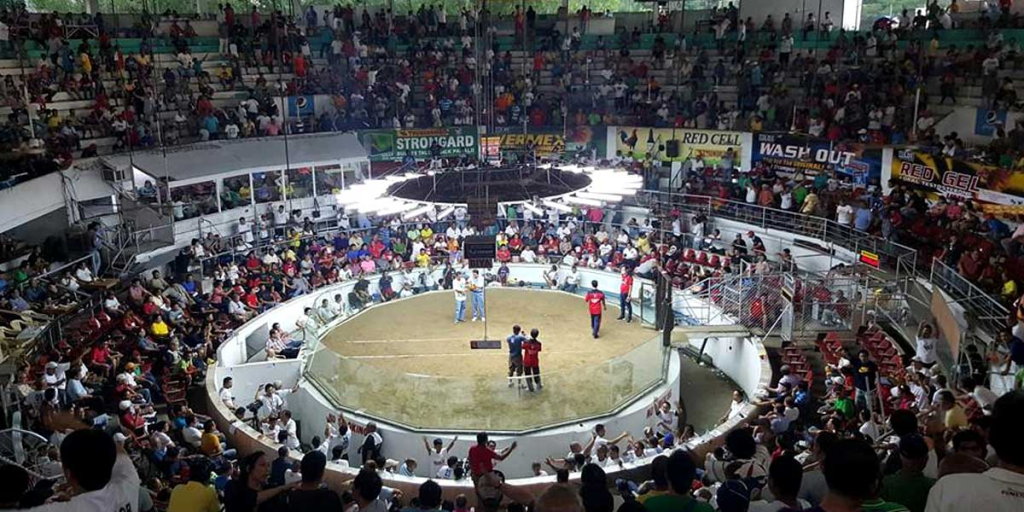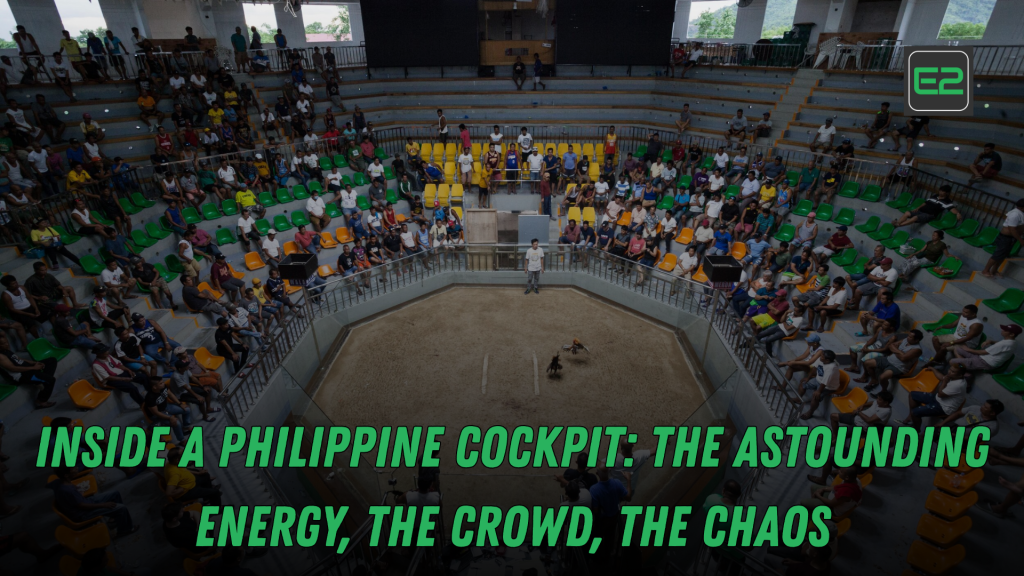The cockpit is one of the most distinctive and culturally significant venues in the Philippines. It is the arena where the centuries-old tradition of sabong (cockfighting) comes to life, with fierce competition, electrifying energy, and crowds that are as passionate as they come. The cockpit is not just a place for a sport, but a microcosm of Filipino culture, tradition, and community. In this article, we’ll delve into the captivating atmosphere of a Philippine cockpit, the dynamics of a sabong event, and why it continues to captivate the hearts of Filipinos.
Table of Contents
1. What is a Cockpit?
1.1. Definition and Purpose
A cockpit is an arena or venue where sabong, or cockfighting, takes place. These arenas can vary in size, from simple, open-air structures to more modern, enclosed venues equipped with seating and facilities for spectators. Cockfighting is a deeply rooted tradition in the Philippines, with a rich history dating back to pre-colonial times.
- Traditional Cockpits: These are often open-air structures where the crowd stands or sits around a circular ring where the fight takes place.
- Modern Cockpits: Modern versions are more sophisticated, with seats, lights, and sometimes even betting stations, offering a more controlled and comfortable environment for spectators.

1.2. The Role of Cockpits in Filipino Culture
Sabong is not only a sport but a cultural activity that brings together communities. The cockpit serves as a gathering point, where families, friends, and even strangers come together to witness the competition. It represents a part of Filipino history and tradition, with some cockpits dating back decades or even centuries.
- Community Hub: In rural and urban areas alike, cockpits serve as a place for people to connect, talk, and celebrate their shared love for the sport.
- Social Significance: It is a place where people exchange stories, make wagers, and share moments of tension and joy. The cockpit is as much about the experience and the social interactions as it is about the cockfighting itself.
2. The Energy and Atmosphere Inside the Cockpit
2.1. The Electric Atmosphere
As soon as you step into a cockpit, the intensity of the energy hits you. The air is thick with anticipation as fans eagerly await the start of the fights. The sounds of the crowd – from cheers and chants to the sound of roosters crowing – fill the arena. It’s a sensory overload that fuels the adrenaline of every spectator.
- Roars of the Crowd: As the birds are released into the pit, the crowd erupts with cheers, excitement, and support for their chosen cock.
- Pulsating Energy: The energy inside a cockpit is contagious. Fans are not passive spectators; they actively engage with the fight, shouting encouragement, discussing strategy, and reacting to every move in the arena.
2.2. The Crowd’s Involvement
The crowd inside a cockpit is unlike any other sports arena. Fans come from all walks of life, but they all share a deep passion for the sport. Whether they are seasoned bettors or first-time visitors, the experience of being in the cockpit is a communal one.
- Betting and Wagers: Betting is an integral part of sabong. Spectators place wagers on their chosen roosters, and the stakes can range from small amounts to significant sums of money. The thrill of the bet adds a layer of excitement, as the crowd eagerly watches the fights unfold.
- Group Dynamics: The crowd’s energy is amplified by the collective experience. Whether winning or losing a bet, the crowd’s reactions create a sense of camaraderie among spectators, contributing to the overall atmosphere of the event.

3. The Chaos of a Sabong Fight
3.1. The Fights
At the heart of the cockpit is the cockfight itself. Two roosters, specially bred for fighting, are pitted against each other in a battle that lasts until one of the birds is deemed unfit to continue. The roosters are often armed with blades or spurs, making the fights fast, furious, and brutal.
- Tactics and Skill: The fight is not just about brute strength; it is also about strategy, agility, and the ability to outmaneuver the opponent. Trainers and owners closely monitor the roosters, studying their behavior and fighting patterns to determine which bird has the upper hand.
- The Role of the Handler: While the roosters fight, their handlers are positioned outside the pit, shouting commands and motivating their birds. The relationship between the handler and the rooster is often one of deep trust and respect.
Raising Gamecocks in the City: Urban Amazing Breeding and the Underground Scene
3.2. The Emotional Rollercoaster
The chaos inside the cockpit is heightened by the emotional rollercoaster that the spectators experience during a fight. Every punch, every dodge, and every move from the roosters elicits intense reactions from the crowd.
- Tension and Relief: The crowd holds its breath during the most intense moments of the fight, only to erupt in cheers or groans as the outcome becomes clear. The emotional highs and lows of watching a cockfight are as exhilarating as they are unpredictable.
- Celebration and Disappointment: When a rooster wins, the winning bettors and fans celebrate with joy, while those who lose may show their disappointment. The emotional intensity of the event is one of the main reasons people keep coming back to cockfights.
4. The Legal and Ethical Considerations
4.1. The Legality of Sabong in the Philippines
In the Philippines, sabong is legal, and it is considered a traditional activity that is regulated by the government. However, there are strict guidelines and regulations that govern how cockfighting is organized, including rules regarding animal welfare, safety, and betting.
- Government Regulation: The Philippine Amusement and Gaming Corporation (PAGCOR) oversees the regulation of cockfighting events in the country, ensuring that they are held in licensed venues and that animal welfare laws are followed.
- Animal Welfare Concerns: While cockfighting remains popular, it has also sparked ethical debates concerning animal rights. Advocates for animal welfare argue that cockfighting is cruel to the birds involved, while supporters of sabong maintain that it is a traditional practice that is carefully regulated.

4.2. The Future of Cockfighting in the Philippines
As the world continues to evolve, so too does the future of sabong in the Philippines. While it remains a deeply entrenched part of Filipino culture, the practice is facing growing scrutiny from animal rights groups and changes in global perceptions. The future of cockfighting may depend on finding a balance between preserving tradition and addressing ethical concerns.
- Modernization: Some have proposed modernizing cockfighting to ensure better treatment of the animals involved. This includes the use of technology to monitor the health and welfare of the roosters.
- Cultural Preservation: For many, sabong is a cultural heritage that must be protected. As the industry evolves, it will likely continue to be a source of cultural pride and entertainment for the Filipino people.
5. Conclusion
The Philippine cockpit is much more than just a place for cockfighting; it is a symbol of tradition, culture, and community. The energy, the crowd, and the chaos inside these arenas reflect the passion that Filipinos have for the sport. Whether for the love of the game, the thrill of the bet, or the camaraderie it fosters, sabong remains a powerful force in Filipino culture.
Share us your thoughts!
If you want to experience the energy and excitement of sabong in the Philippines, visit a local cockpit or follow the sport through social media and online platforms. Join the conversation, share your experiences, and be part of the vibrant world of Filipino cockfighting.
Frequently Asked Questions (FAQs)
1. What is a cockpit in the Philippines?
A cockpit is a venue where sabong (cockfighting) takes place. It is a place where spectators gather to watch roosters fight, usually with bets placed on the outcome.
2. Is cockfighting legal in the Philippines?
Yes, cockfighting is legal in the Philippines but is regulated by the Philippine Amusement and Gaming Corporation (PAGCOR) to ensure it follows specific rules and guidelines for animal welfare and safety.
3. How does a cockfight work?
In a cockfight, two specially trained roosters fight until one of them is declared unfit to continue. The birds are often equipped with blades or spurs on their legs for the fight.
4. Why is cockfighting so popular in the Philippines?
Cockfighting is deeply rooted in Filipino culture and tradition. It’s seen as a form of entertainment, community bonding, and even a way to showcase skill and strategy.
5. Are there ethical concerns surrounding cockfighting?
Yes, animal rights groups raise concerns about the cruelty involved in cockfighting. However, many argue that it is a traditional practice that is carefully regulated to ensure the welfare of the animals.
